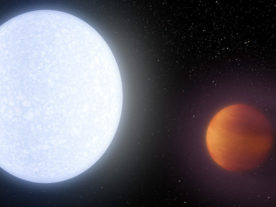
Iron and Titanium Found in Atmosphere of Ultra-hot Exoplanet
The chemical makeup of Earth’s atmosphere is said to contain about 78% Nitrogen and 21% oxygen, with argon, carbon dioxide, and other gases making up the remaining 1%. But an international team of scientists says they have detected vapors of iron and titanium in the atmosphere of what is considered to be the hottest “ultra-hot” […]

Possible New Power Source of Yellowstone Supervolcano Found
According to the US Geological Survey, the Yellowstone supervolcano, located in the Western United States, is known to have had three major eruptions between 640,000 and 2.1 million years ago. It’s been long thought that the volcano was powered by heat from the Earth’s core, like most other volcanoes. But, a new study suggests that […]
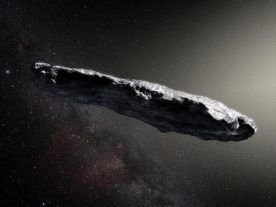
Oumuamua: It’s a Comet, It’s an Asteroid, No, wait, It’s a Comet
An odd rocky cigar-shaped object called Oumuamua made news late last year when it was determined to be of interstellar origin. It was touted as the solar system’s first visitor from another star system. Some scientists first pegged Oumuamua as a comet soon after its discovery. A few months later studies indicated that it was […]

Astronomers Detect Nanodiamonds in Three Baby Star Systems
Astronomers have detected swirls of diamonds, hundreds of thousands of times smaller than a grain of sand, in the protoplanetary or circumstellar disks of three baby star systems in the Milky Way – V892 Tau, HD 97048, and MWC 297. After conducting a series of observations with the US National Science Foundation’s Green Bank Telescope […]

Found: The “Mother of All Lizards and Snakes”
Back in 2003, scientists uncovered an odd looking, tiny lizard-like fossil in the Dolomites, a mountain range in Northern Italy, which is also a part of the Alps. Silvio Renesto and Renato Posenato wrote of the discovery in the Italian science journal Research In Paleontology and Stratigraphy. An international team of paleontologists then set out to […]

First Detection of Helium in an Exoplanet Atmosphere
Scientists say for the first several hundred thousand years or so after the Big Bang, there were virtually only two elements in the universe, hydrogen, and helium. A hydrogen atom is made of only one proton and one electron, and a helium atom has two each of protons, electrons, and neutrons. Hydrogen and then helium are […]
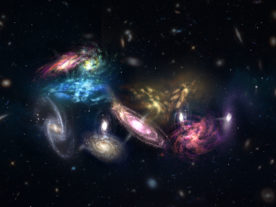
Galaxy Megamergers 1.4 – 1.5 Billion Years after the Big Bang
Two teams of astronomers have used the Atacama Large Millimeter/submillimeter Array (ALMA) and the Atacama Pathfinder Experiment (APEX), in Chile, to observe dense concentrations of so-called “starburst” galaxies. With these galaxies packing together so closely, the scientific teams realized that they were getting ready to violently collide and merge with each other, which would eventually […]
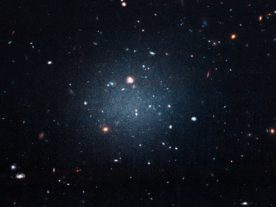
A Galaxy is Missing Its Dark Matter
Scientists say that the invisible and mysterious dark matter makes up about 27% of all material in the universe. Regular or normal matter that you see and touch every day takes up 5% and the remaining 68% comes from an enigmatic form of energy called dark energy. According to NASA, dark matter serves as a type of […]

Amateur Astronomer Images First Light From Supernova
An amateur astronomer strikes gold when, for the first time, he was able to image the initial burst of optical light produced by a supernova millions of light years from Earth. Victor Buso of Rosario, Argentina is a locksmith by trade and a self-taught astronomer. On September 20, 2016, Mr. Buso was trying out a new […]
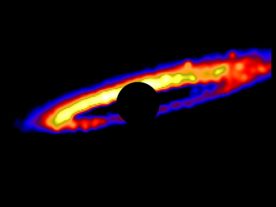
Insight Into Planetary Evolution – Dark Matter Rare in Old Galaxies
Scientists Gain New Insight into Planetary Evolution Scientists recently gained new insight into the evolution of planet formation by creating and studying a model of a fairly young solar system 300 light years from Earth. The nearly 13 million year-old planetary system circles a star known as HD 106906. The system features a surrounding planet […]
